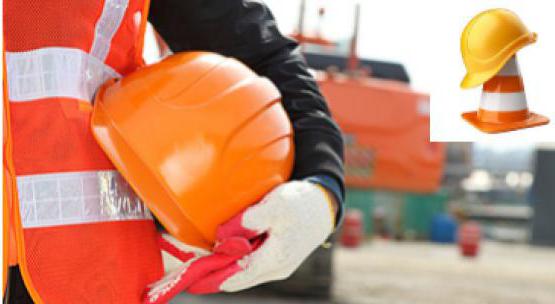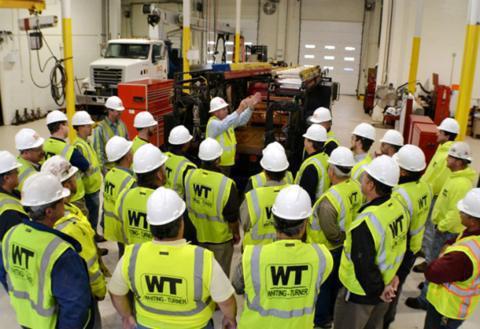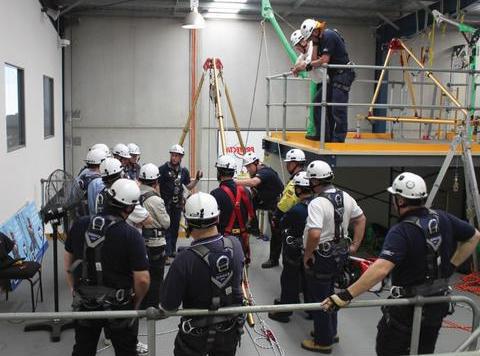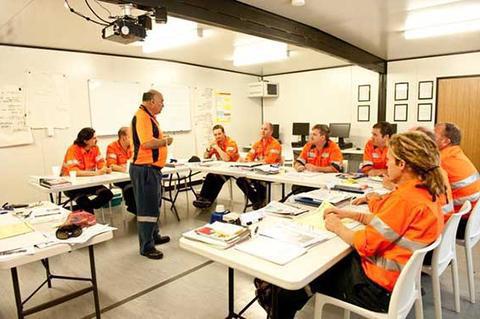Labor protection is a set of measures aimed at ensuring safe conditions for citizens to carry out their professional activities in any economic sphere. 
Legislation prescribes the conduct of various health and safety briefings. They vary in time and nature of the conduct. Let us consider further what constitutes targeted safety training: who conducts event and for what purpose.
General information
Conducting targeted safety training regulated by the Labor Code, GOST 12.0.230-2007 and Resolution of the Ministry of Labor No. 1/29. It is aimed at informing employees about safety rules in the implementation of a specific type of activity. As a rule, it is a freelance, unscheduled, that is, it goes beyond the scope of the main activity of the enterprise.
Targeted safety instructions, for example, can be carried out before cleaning the area adjacent to the trading company.
The reasons
The objectives of the briefing are determined by the specifics of the work that will be discussed. However, the key task, in any case, is to inform employees about safety rules when carrying out an activity.
Reasons for conducting targeted safety training can be:
- The need to perform work that is not related to the main activity of the organization or the duties of a particular employee. For example, it can be unloading goods, a clean-up day, etc.
- Participation in excursion activities, which are usually unplanned.
- The need to carry out potentially hazardous work, the production of which requires a special management order or work permit. Without passing a targeted briefing on labor protection, employees cannot be allowed to perform tasks of such a plan.
- Participation in the aftermath of disasters, natural disasters, emergency situations.

Special cases
Often enough targeted safety briefings held in connection with:
- Replacement of materials, equipment, technology used in the production process.
- Diversification (expanding the assortment, reorienting the sales market, etc.) of the main activity of the enterprise.
- Change in legislative norms on health and safety.
- A long break of the employee in work in the specialty.
- Gross violation of the law by the employee.
- Safety analysis of the production process, including at other enterprises.
Who passes and who is exempted from the event?
Targeted safety instructions must visit all employees who are involved in non-staff activities. Accordingly, if there is no change in the work of an employee, he may not attend the event.
Moreover, the employee may refuse to undergo targeted training if he refuses to perform non-staff tasks. However, this rule does not apply to cases of emergency response. 
Order
Targeted safety instructions to be carried out in accordance with the requirements of the law. First of all, the head of the enterprise issues an order. It defines the employee authorized to conduct the briefing and the reflection of his results in magazine. Targeted safety instructions conducted by an employee who will lead the work.This may be the team leader, shop manager, foreman, etc. After the work is done, the responsible employee will accept the results.
If a situation arises, the responsible employee notifies the staff of the upcoming event. The results of explanatory work and knowledge testing are reflected in a special journal and other documents used at the enterprise.
Employees who have not been instructed, as well as received an unsatisfactory assessment based on the results of the audit, are not allowed to perform the work. If necessary, an event with them is repeated.
Sample list of questions
During the targeted briefing, the requirements for TB are explained:
- Before starting work. The responsible employee talks about the requirements for clothing, shoes, inventory and the rules for handling it, the use of materials, the principles of operation of the equipment.
- During work. The staff should be aware of safe methods and techniques for completing tasks, actions during emergency situations, the scheme of safe movement within the territory, and the procedure for group activities.
- After finishing work. The employees are explained the rules for stopping equipment, turning off mechanisms and components, cleaning inventory, and clothes.

You can use the following sample program of targeted training on labor protection:
- Introduction The responsible employee describes the situation, the main tasks, the nature of the work, especially the territory within which they will be carried out.
- Familiarization with the devices that will be used in the work. Special attention should be paid to the prevention of dangerous situations.
- Rules for preparing a place for work.
- Actions of employees in case of unforeseen situations.
- Description of protective equipment and instructions for their use.
- Checking the assimilation of the material. After the briefing, a kind of exam is held. The responsible employee asks questions to the employees and checks whether they have memorized the information well.

Design Features
Targeted safety instructions - an event authorized by the management of the enterprise. Accordingly, information about him should be reflected in:
- The magazine.
- Personal card of the employee (if such documents are used at the enterprise).
- Along with the admission (or other documents equated to it).
If the organization keeps personal cards of employees, the fact of carrying out explanatory work is reflected in them indicating:
- The names of the instructions used in the training.
- Learning outcomes.
Magazine
It is drawn up after carrying out explanatory activities and checking the assimilation of information. AT Occupational safety training magazine reflect the following information:
- F. I. O. and the position of the employee who has been instructed and tested.
- The name of the unit of the enterprise in which the employee will perform the task.
- The date of the event.
- F. I. O. and the position of a responsible employee.
The journal provides graphs for signatures of employees who conducted and have been instructed. 
The document must be laced, the sheets in it are numbered. The magazine is certified by the signature of the head and the responsible employee. The document is stored in the personnel department or in the OT service.
The timing
There are no specific dates for the briefing in the legislation, since it is carried out when it becomes necessary to perform one or another freelance work.
In preparing for the organization of the briefing, the responsible officer should take into account that it may be necessary to re-conduct the event. Therefore, you need to calculate the time in such a way that those who showed an unsatisfactory result can correct it before starting work.
Introductory briefing on labor protection
It is carried out when a citizen enters work.
In some cases, an introductory briefing on labor protection is reduced to a simple formality. However, this is unacceptable. Each employee must undergo initial training, and the employer must organize it.
During the introductory briefing to the employee are explained:
- Features of public administration and protection of public health.
- Requirements of OT, contents of instructions applicable at the enterprise.
- Rules of safe behavior in the organization.
- General norms of labor law.
- Conditions for the implementation of professional activities.
The employee also receives information about the dangerous factors present at the enterprise, the possibility of their negative impact on the body, and means of protection against them. 
The head of the enterprise should carefully approach the issue of choosing the employee responsible for the initial briefing. This worker should be knowledgeable about all the rules, regulations and requirements. As a rule, introductory briefing is carried out by the head of the OT service.
Conclusion
Recently, special attention has been paid to the safe implementation of work. Legislative requirements in this regard are quite stringent. For managers, responsibility for failure to conduct briefings is established.
Unfortunately, not all directors of enterprises are serious in the field of labor protection. Often, organizations do not conduct briefings, do not check knowledge of safety rules. As a result, when an emergency occurs, employees simply do not know what to do. This often leads to accidents, including fatalities.
Health and safety training is especially necessary in hazardous and hazardous industries. The employees' ignorance of safe working methods leads to the most dire consequences.
You should not think that targeted instruction is less important than introductory. Freelance activities can be associated with different circumstances and carried out under the influence of various factors, including weather.
If it is necessary to involve employees in the liquidation of the consequences of disasters or man-made disasters, briefings are conducted jointly with employees of the Ministry of Emergencies and other rescue services. If necessary, employees of the enterprise are given reminders and brief instructions on how to behave in certain dangerous situations. Many enterprises create special information stands, which provide all the necessary information on health and safety.